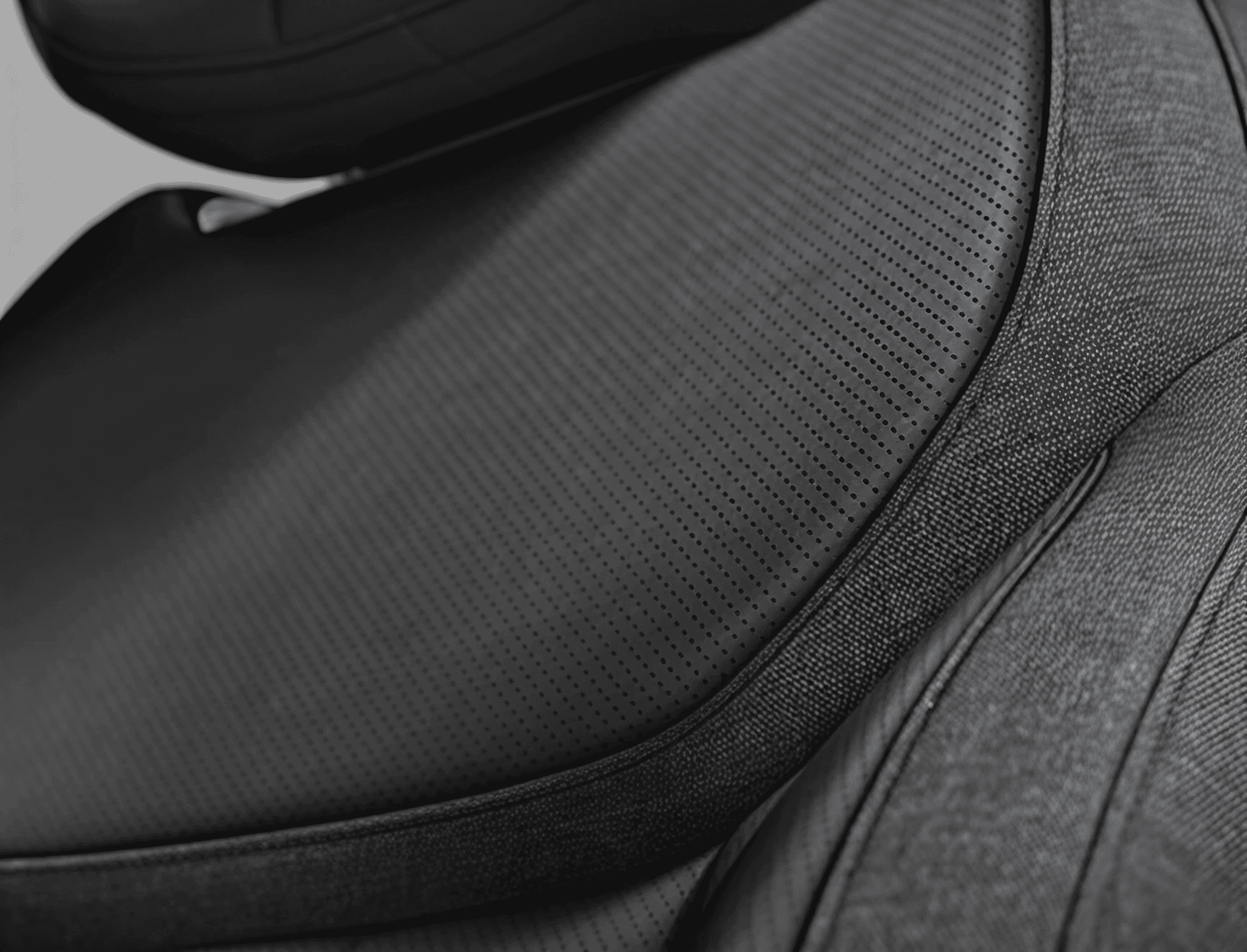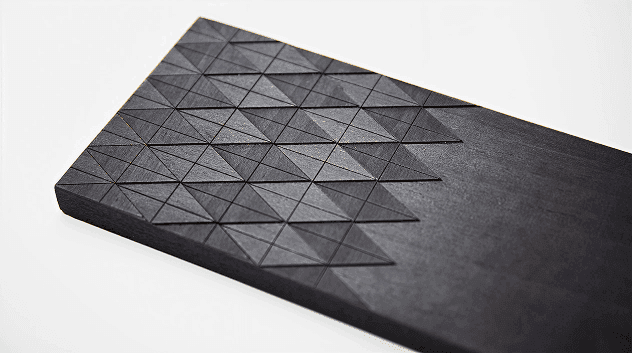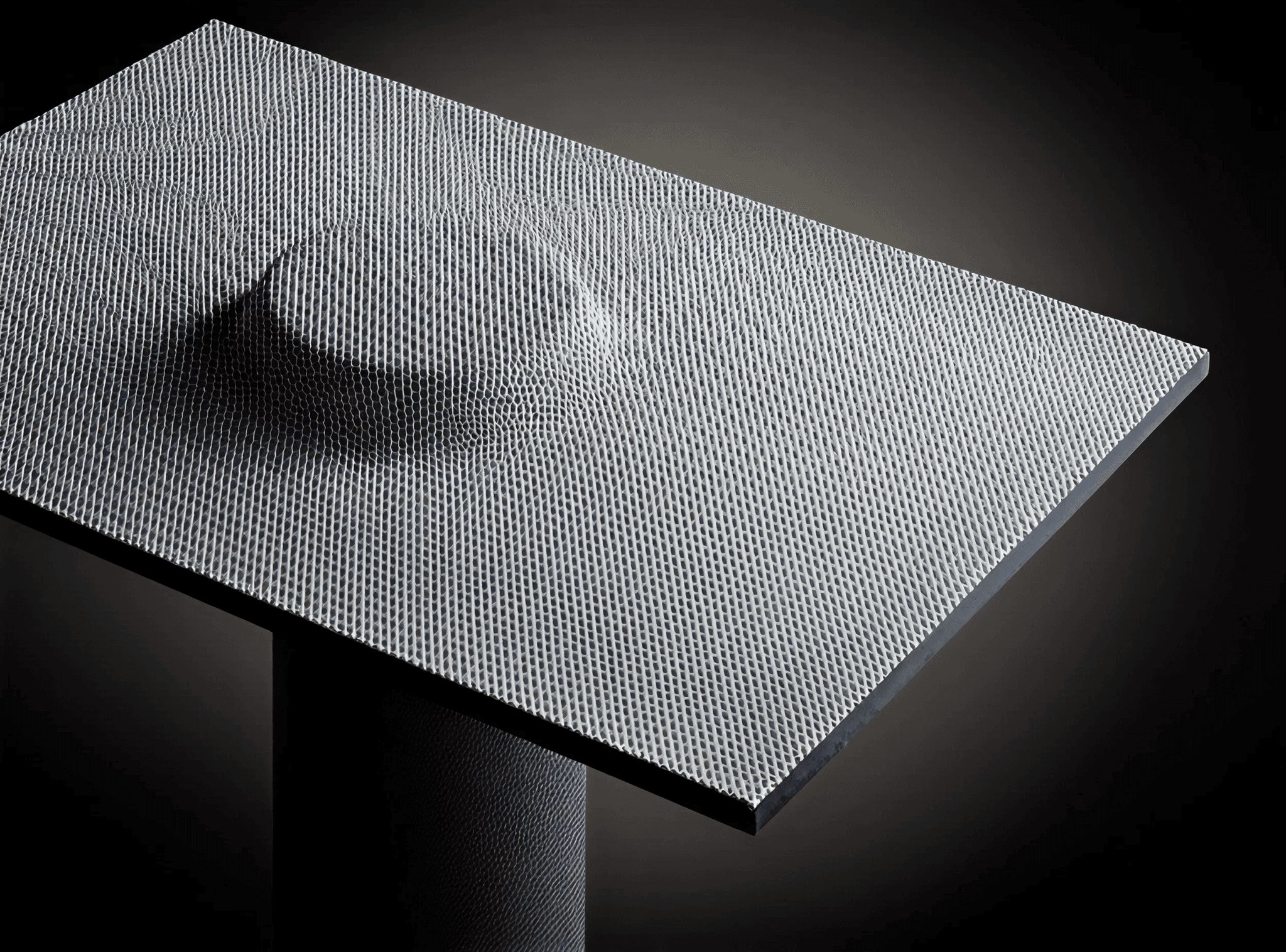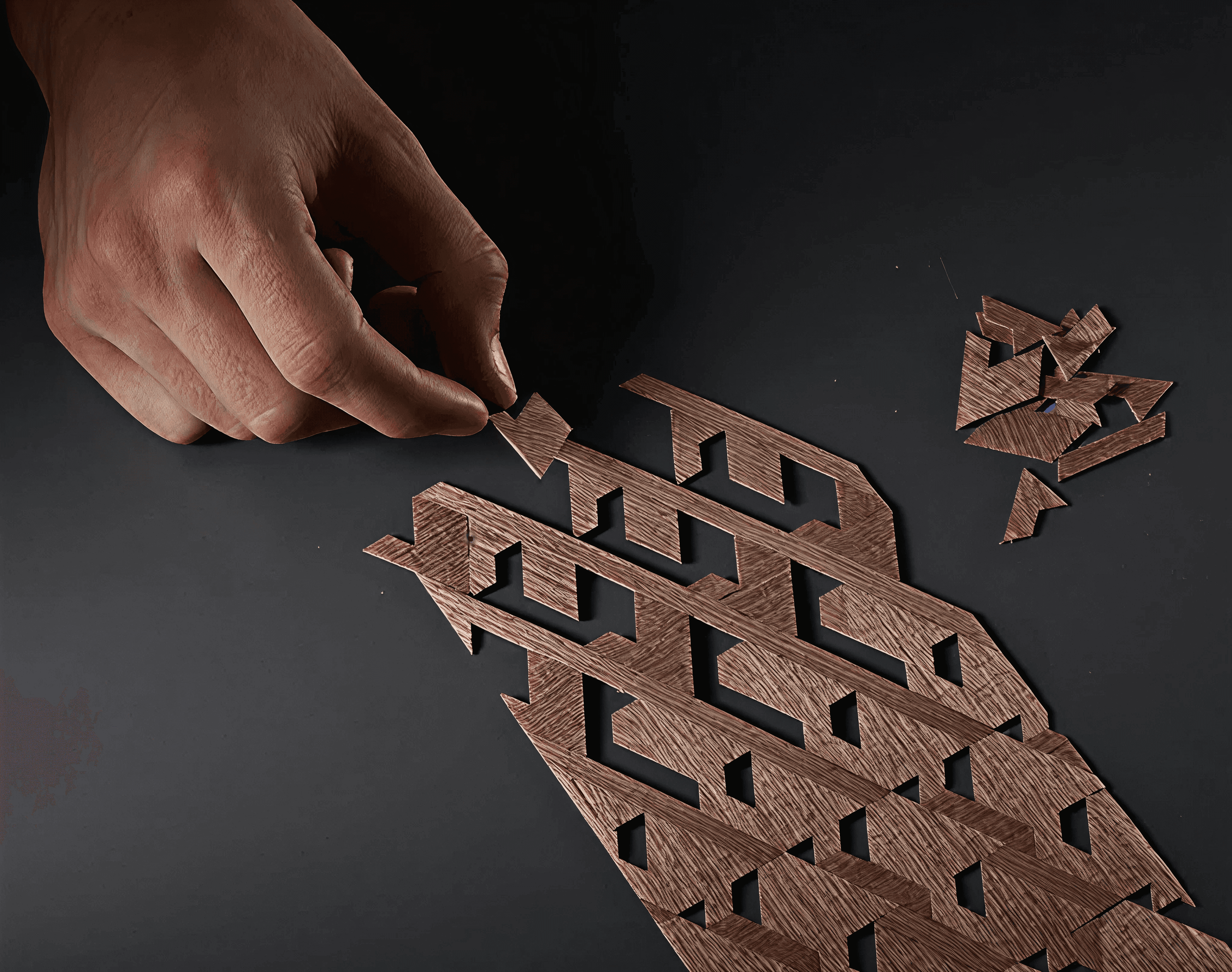1. Your work with Kvadrat textiles for Range Rover interiors set a precedent for premium non-leather options in luxury cars. How did you evaluate the performance characteristics of these textiles against traditional automotive leathers during development?
The collaboration with Kvadrat, Europe's leading manufacturer of premium textiles, was one of a kind when we launched these materials on the 2017 Range Rover Velar. Since then, whilst I was still at JLR, we strategically delivered Kvadrat textiles, more responsible textiles, and non-leather interior offerings for every vehicle nameplate across the House of Brands: Range Rover, Discovery, and Defender. This strategy rollout was realised by the 2024 model year with the Range Rover Sport SV model.
The teams had to actively push against traditional automotive 'luxury' conventions to deliver these material choices. Starting with the Velar, the Kvadrat Premium textile was offered alongside top-grade leather as an equivalent choice. The goal was to signal that the textiles were just as luxurious, high-performing, and desirable as more traditional interior materials like leather. The positioning was key.
Developing and testing the textiles for automotive usage was a journey for both JLR and Kvadrat. All the same attributes expected from leather in terms of performance, aging, and comfort were required from the textile. (In fact, in many areas, we learned the textile outperformed more traditional materials, but this depended on the weave structure and material placement.)
Weight and flexibility were attributes in which the textile performed differently. Non-leather interiors had significant weight savings, and in terms of trimming on 3D geometry, textiles typically had more stretch, providing more exacting fits for seating covers. In some cases, perforation was not required for heating and cooling on seats, and breathability was also greater with textiles. Wool naturally has thermal regulation, as it can keep you cool in the heat and warm in the cold due to the 'crimp' structure of the fibres. Wool is also a hygroscopic fibre, meaning it can absorb moisture vapour from the skin and wick it away.
All the standard tests performed on traditional seating and interior materials were used to evaluate the textiles. Some tests at the time seemed designed to really push the textile to its limits. For example, pilling and snagging tests were quite 'barbaric', literally using a small mace (yes, the weapon) to simulate jean rivets or Velcro snagging the materials during ingress or egress. We worked closely with Kvadrat to adjust the weave structures, yarn densities, and yarn blend percentages to meet requirements. (And this happened while we were developing our colour requirements.)
In the end, we delivered a 30% wool / 70% polyester blend textile for Velar, with the goal to continue increasing the amount of natural and responsible fibres in future programs.
As we were working with new 'ingredients' at the time (wool), we discovered tests previously unnecessary for traditional materials. Fogging was one of them. Since wool is a natural fibre with inherent moisture (think of your own hair), we found that using more than 30% wool could result in moisture fogging the front screen during testing.

2. When designing for a brand like Land Rover, which is steeped in tradition yet positioned for innovation, how do you integrate disruptive material choices without alienating brand loyalists?
To ensure we addressed all customer needs, we created an offer structure that allowed for choice, enabling us to test and learn. Whatever attributes mattered to our clients, be it more responsible choices, non-animal materials, or higher performance, we aimed to be proactive with innovative solutions, even before these were requested. This was true across all material categories.
Each brand within the House required a different balance of tradition and progression. For example, Defender allowed more room to dial up performance-focused innovation, and we were faster in delivering technical material changes. For the flagship Range Rover, we offered both Kvadrat options and furniture-grade leather to strike a balance.

3. The shift towards material-led design is central to your vision. Could you detail the framework or criteria you use to assess whether a new material is truly ready for mass production?
Colour, material, and form are intrinsically linked. They should be developed together. But aligning to this co-creation model remains a challenge in automotive, where design often happens in silos due to the deep skill mastery required.
Assessing material readiness can take years because of the rigorous tests and safety standards required. (If a material is entirely new to the industry or the brand, new tests may even need to be created.)
Most of the time is spent collaborating with Sustainability, Engineering, and Quality teams to bring materials to mass production and continuously improve processes, with the goal of a more circular future.
4. Balancing durability, tactile comfort, and aesthetic depth is a constant challenge in interior materials. How do you test and refine textiles to meet all three without compromise?
It's a multi-layered process. It begins with material selection, guided by a clear brief on what needs to be achieved in terms of feel, look, and technical requirements. Then, materials go through early-stage testing for factors such as abrasion resistance, light fastness, and tactile qualities. Often, this is followed by mock-ups and prototype builds, which allow the team to physically experience how the material performs in context. Feedback loops are crucial at this stage. We conduct both quantitative lab testing and qualitative evaluations involving stakeholders, including engineering, CMF design, and even customer clinics when needed. If a material fails to meet the standards in even one dimension, whether it's comfort, aesthetics, or durability, it is either refined further or replaced. The goal is to strike the best possible balance without compromising the core values of the vehicle's interior experience.

5. Many of your projects champion sustainability through high-quality alternatives to animal-derived materials. How do you address scepticism from markets that still equate luxury with leather?
This has always been a push and pull, regardless of brand. I found that data, combined with analogous industry examples, helped provide facts. But even with data, the automotive industry and some markets are risk-averse. It’s always easier to keep doing what’s always been done.
So you have to appeal to both the heart and the mind. In luxury brands, innovation is typically the differentiator. Engaging with key stakeholders early during ideation helped bring them on the journey. And often, the more responsible solution looks the most modern, so you can pivot and advocate for what's aesthetically best, which just so happens to be more responsible. This isn’t flippant. Some people are simply averse to making decisions based on sustainability metrics alone. There will always be sceptics when doing something new. That discomfort is actually a good signal in design. You just need enough champions to deliver it.
6. Collaboration is a recurring theme in your work. When working with external suppliers like Kvadrat, how do you align their design language with the functional demands of automotive interiors?
Effective collaboration starts with identifying shared values and alignment before any product development begins.
Kvadrat is a great example. They were chosen as a design-led brand with aesthetic values aligned to Range Rover. We held site visits and multiple meetings before kicking off the project. It was understood that automotive requirements were rigorous, many being legal or safety-related.
If technical or design elements couldn’t meet requirements, it was a non-starter. I’ve had experiences where the first program with a supplier didn’t work out, but by the second or third, we co-created a viable solution. It's often a long game.
Collaboration needs push and pull from both sides. The OEM also needs to contribute. In some cases, suppliers had engineers working onsite at the OEM, or a member of their design team working from a secure location in our studio.
Flexibility, agility, and persistence are key.
7. The automotive lifecycle poses unique challenges for sustainable materials. What end-of-life strategies do you consider when specifying innovative textiles or surface finishes?
In CMF Design, you consider both the A surface and the B surface (a material-led design approach). But this mindset needs to extend across all collaborators within the business. That shift is beginning, but it takes time.
Right now, many brands are phasing out PVC, going leather-free, or eliminating traditional chrome plating, in favour of materials that can be more easily recycled or use less water and plastic in production.
If the business sustainability strategy is clear and strong, design studios can create material roadmaps for the now, next, and future, either phasing things out step by step or introducing new solutions.

8. How do you see the “material narrative” evolving in the next decade, will we move towards visible sustainability cues or seamless integration where the eco-credentials are invisible but inherent?
Seamless integration. Responsible design is now expected, and people no longer want to pay more for it. That’s the challenge.
Designing for a circular future is critical, but requires new systems and processes, which in turn require investment, testing, learning, and sometimes failing.

9. As head of colour and materials, you are designing for products that may launch years after concept. How do you anticipate cultural and material trends that will feel relevant at the point of release?
You must consider the brand, product, and clients when deciding how far to go. Ideally, you stay aware of analogous industries, socio-cultural movements, and economic shifts, but ultimately, the direction must fit the brand and product.
Not all brands have the equity or freedom to take big aesthetic risks, so sometimes you rely more on market trends. A car is usually the second-largest purchase after a home, so people tend to make more conscious decisions.
CMF Design with longevity in mind tends to be more modern. Developing brand house codes (if none exist) is always exciting. A clear, consistent Design strategy provides a strong framework, allowing your work to support the brand rather than chase trends.

10. Land Rover interiors often blend high-performance technical materials with natural elements. How do you manage the interface between these contrasting surfaces to ensure cohesion in both look and feel?
Each brand under Land Rover has unique heritage and design cues. During my time there:
- Range Rover was about refinement and luxury
- Discovery emphasised premium versatility and architectural use of space
- Defender stood for capability
The overarching blend of technical performance with natural, modern luxury is the real USP. Depending on the brand, we would dial up or down performance and luxury accordingly.
From a tactile and aesthetic perspective, we always aimed for balance (you can have too much of a good thing). Referencing architecture and interior design helped, as these provide a good barometer for materials people live with every day.
Key design tools included grains, satin finishes, and textiles, which can soften, modernise, and balance harder surfaces, especially if you're dealing with large areas of gloss black.
11. If automotive interiors become more autonomous and reconfigurable, what new freedoms or constraints do you foresee for material selection and spatial storytelling?
Areas currently specified with low-cost materials like headliners and flooring will become focal points in autonomous vehicles. Interiors will shift from spaces to places, and viewing them through an architectural lens will elevate aesthetics, usability, and circularity. These are large surfaces, so they present interesting opportunities for material innovation.

12. Looking to the future, which material technologies, biofabrication, closed-loop recycling, or smart textiles, do you believe hold the most promise for reshaping automotive interiors?
To me, the Now, Next, and Future focuses for material innovation are:
- TRUE mono-materials
- TRUE modularity
- Biofabrication
Something we need to address now is the over-engineering of many otherwise promising materials. This may be controversial, but I believe more clarity and simplicity in requirements would significantly benefit OEMs and suppliers. Too many opportunities are lost due to standards that don't reflect true user conditions or are based on the needs of the 2–5% rather than the 95%.








